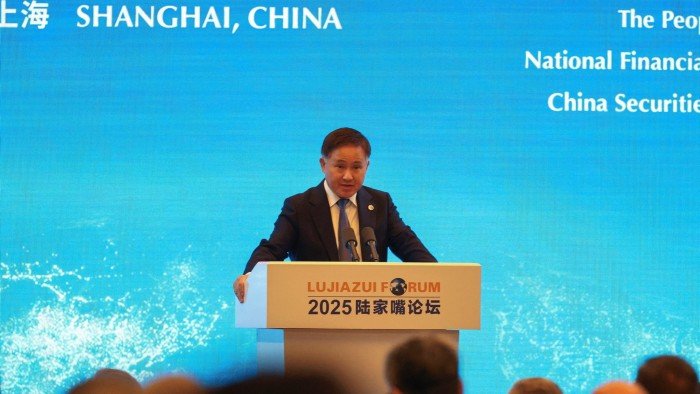Keep up to date with free updates
Just subscribe to the Chinese economy myFT Digest — it will be sent directly to your inbox.
The governor of China’s central bank has stated his belief that a new era of global currency arrangements will form, signaling the end of the US dollar’s long-held supremacy. He predicts that the renminbi will play a crucial role in a “multi-polar international monetary system.”
At a major financial conference in Shanghai, Pan Gongsheng remarked that the US dollar solidified its dominance following WWII and has maintained its position ever since. He cautioned against the dangers of being overly dependent on one currency.
“In the future, the global financial landscape may evolve into one where several sovereign currencies exist side by side, competing and balancing each other’s influence,” he indicated, emphasizing the rising importance of the renminbi.
According to Pan, significant milestones in the international currency landscape in the last twenty years include the launch of the euro and the increased prominence of the renminbi following the 2008 financial crisis.
He highlighted that the renminbi is currently the second most utilized currency for trade financing and ranks as the third-largest currency for payments globally.
His remarks were made shortly after Christine Lagarde, the head of the European Central Bank, stated that the “dominant role of the dollar” is now “less certain,” allowing the euro a chance for “global prominence.”
Pan’s statements also reflect China’s renewed efforts towards establishing a “multi-polar” currency structure amid ongoing trade disputes with the US and the imposition of higher tariffs by Donald Trump.
While Beijing and Washington have managed a temporary calming of tensions by reducing certain tariffs, underlying strains continue as new US policies impact global trade.
“In times of geopolitical conflicts, national security pressures, or even wars, the world’s dominant currency can easily be manipulated and weaponized,” Pan remarked.
Last week, Pan and Lagarde discussed in Beijing the signing of a memorandum to enhance central banking collaboration, which includes a framework for regular communication.
Pan also mentioned exploring greater use of Special Drawing Rights (SDRs)—a collection of currencies governed by the IMF—as a viable alternative to mitigate the challenges posed by a single currency’s dominance.
His comments coincided with several announcements on Wednesday, as China intensifies its efforts towards a currency system centered on the renminbi, including the establishment of an international operation hub for the digital renminbi in Shanghai.
Additionally, six foreign entities, including Singapore’s OCBC Bank and Eldik Bank from Kyrgyzstan, have expressed their intent to join China’s Cross-Border Interbank Payment System (CIPS), a substitute for the global SWIFT payment network.
On the same day, authorities from Hong Kong and Shanghai signed an “action plan” intended to enhance financial connections, focusing on the management and distribution of renminbi-denominated assets.
Zhu Hexin, deputy governor of the People’s Bank of China, stated that Beijing would broaden a program enabling domestic investors to purchase assets abroad. He mentioned the expansion of the Qualified Domestic Institutional Investor scheme to meet the increasing demand for offshore investments from within China.


